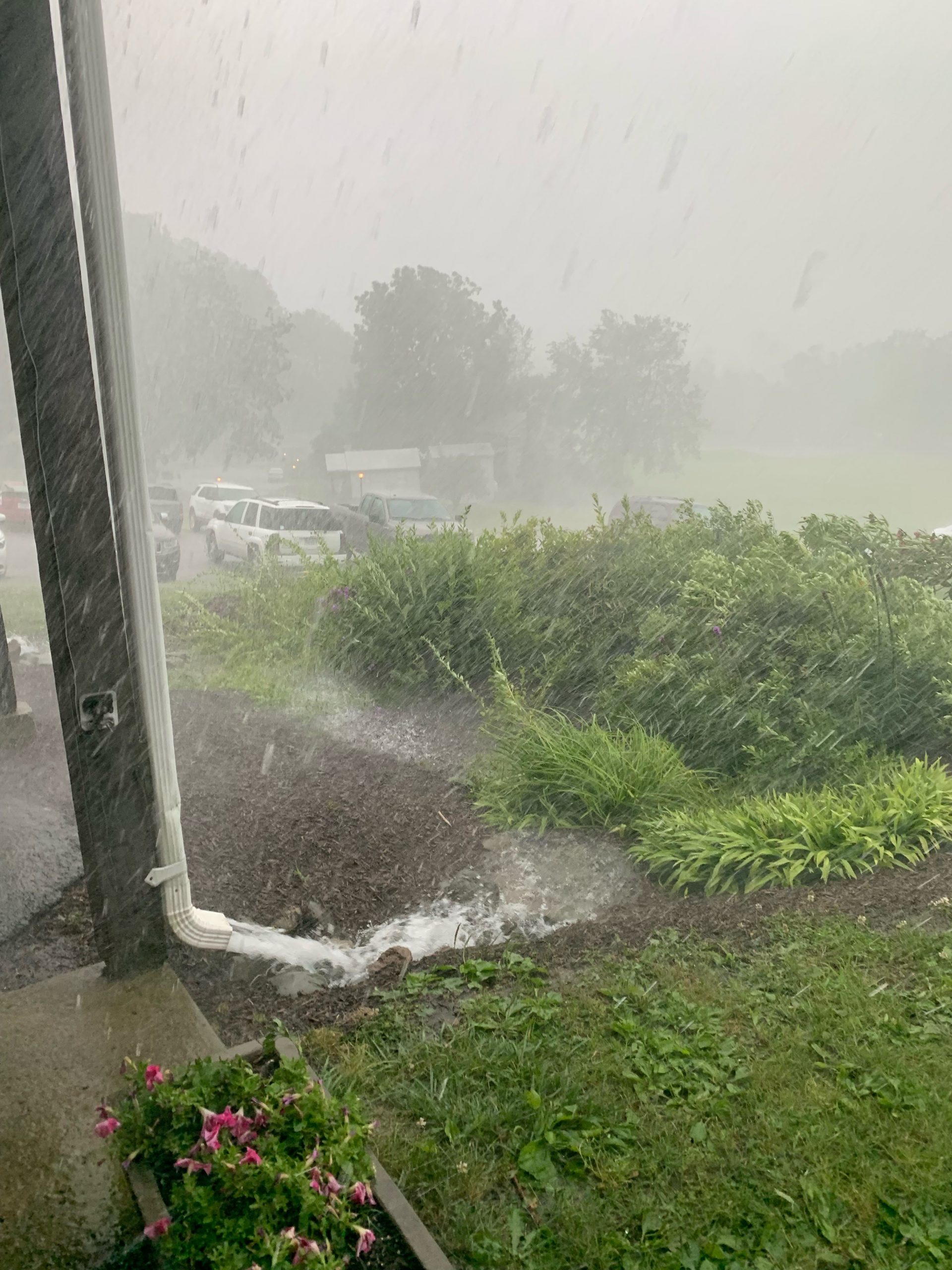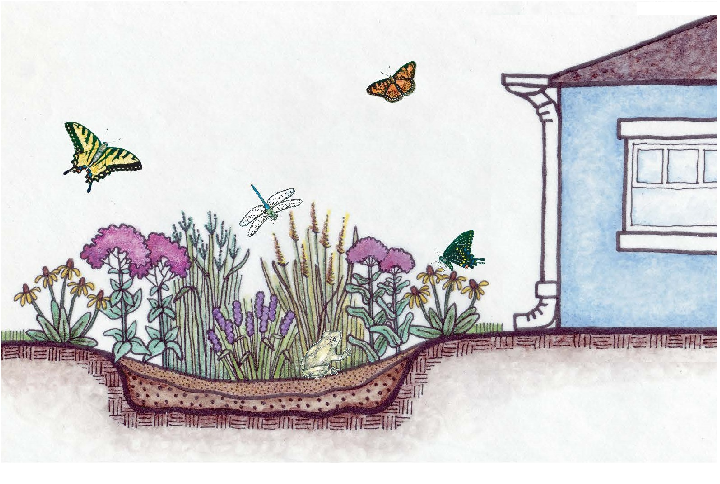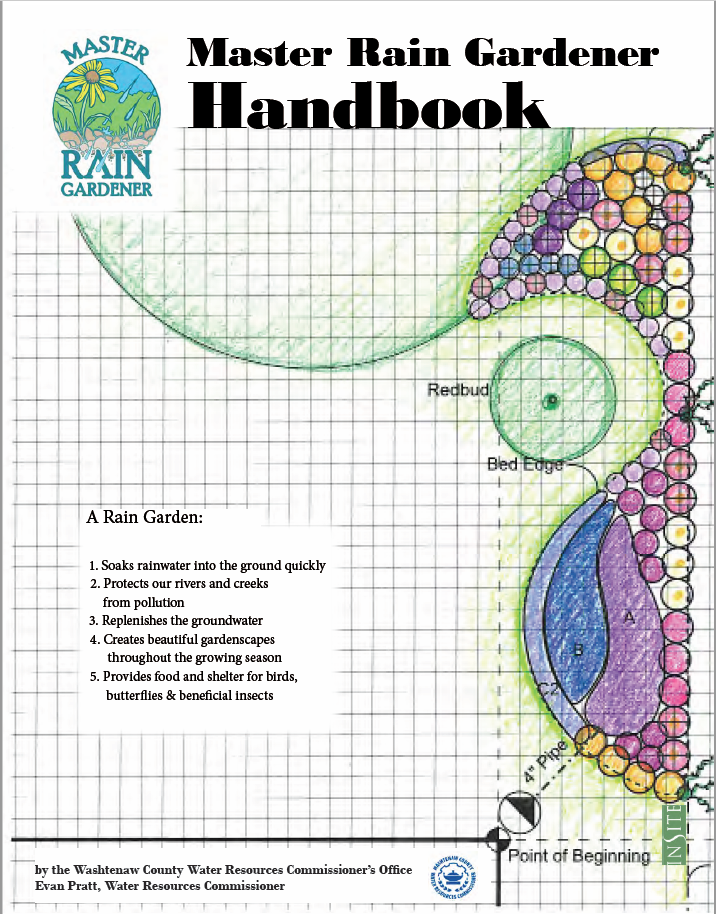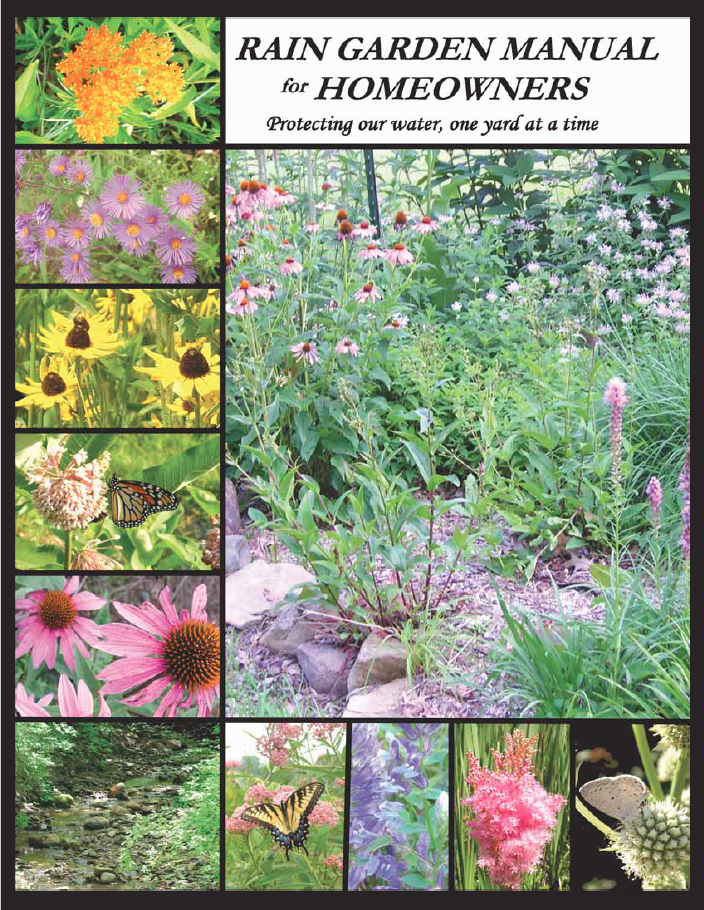
Rain gardens are shallow depressions in the ground towards which water from roof downspouts, driveways, the street, or other sources can be directed. During a rain storm, the depression will pool up with water which then soaks, or infiltrates, into the ground even after the storm is over. These depressions are planted with grasses and flowering perennials that tolerate, or even enjoy, extreme wet conditions. In addition to providing an eye-pleasing landscape, these plants can help soak up the water through transpiration. Depending on the types of plants in the garden, they may also provide food and shelter for butterflies, song birds, and other wildlife.
Things to consider when designing a rain garden:
- Location where water may pool
- Volume of water
- Soil type and condition
- Sun exposure
For work packets on designing and installing rain gardens, consider these resources!

The Master Rain Gardener Program is a 5 week program to teach residents and professionals, alike, the principles of designing and installing a rain garden. Participants meet once a week to learn about topics such as "How do I plan for my specific yard conditions?" "How big should it be?" "Where should it be built?" "What plants are good?" and more!
Participants will earn a certificate by taking the class and building a rain garden. Instructors will be available to offer personalized feedback, so that at the end of the course participants have a customized plan for their site. All participants will need to complete the course content, hands-on assignments, and homework for each session.
Optional field trips will be offered to see rain gardens in the area and talk with folks who have already completed the rain garden installation process.
Questions or Concerns? Contact the Stormwater Coordinator at 440-776-4871

2025 Master Rain Gardener Program
Jan. 29, Feb. 5, 12, 19, & 26, 2024
9am to 12pm
Meeting at:
Lorain County Agricultural Center,
42110 Russia Rd, Elyria, OH 44035


